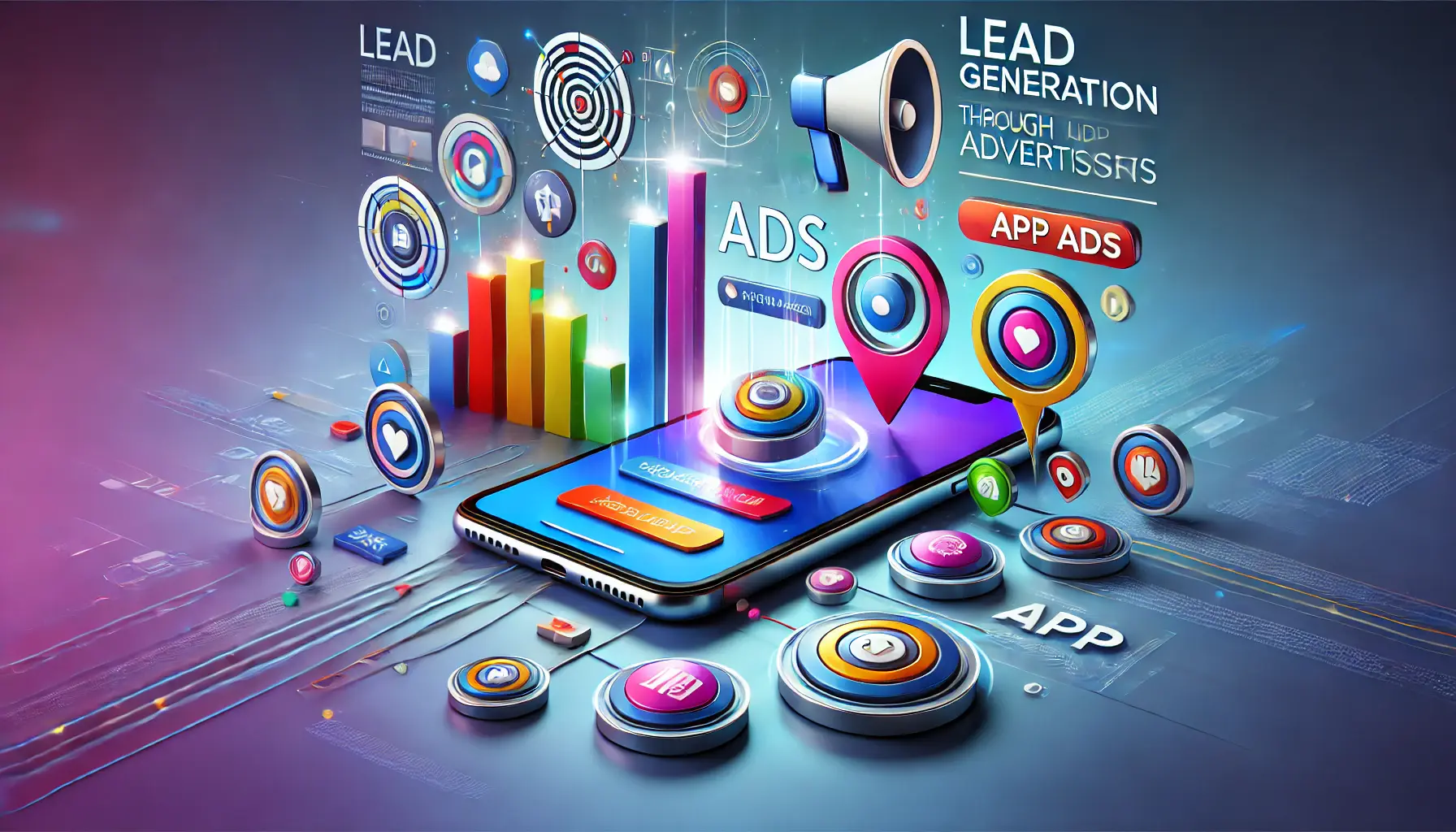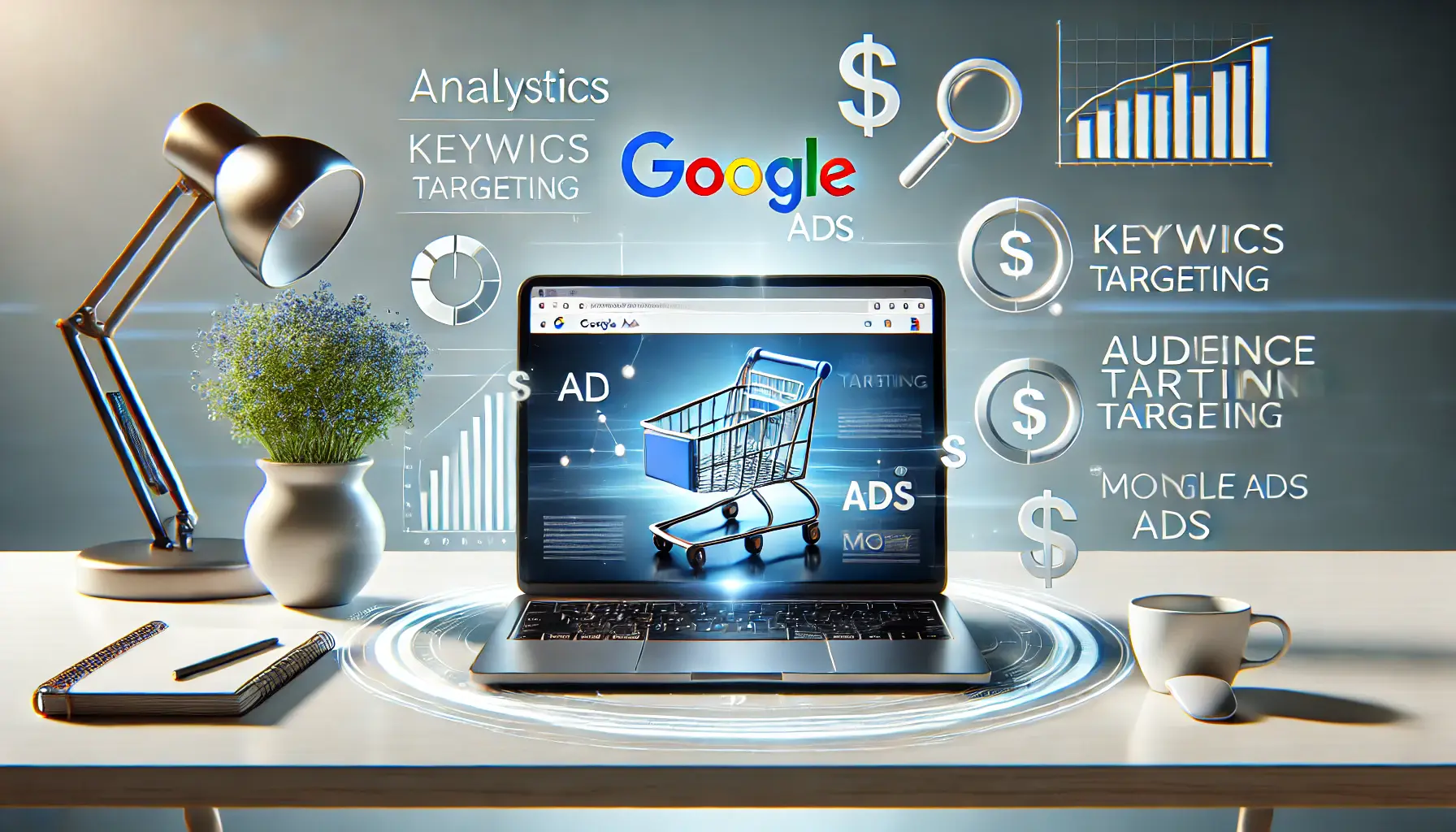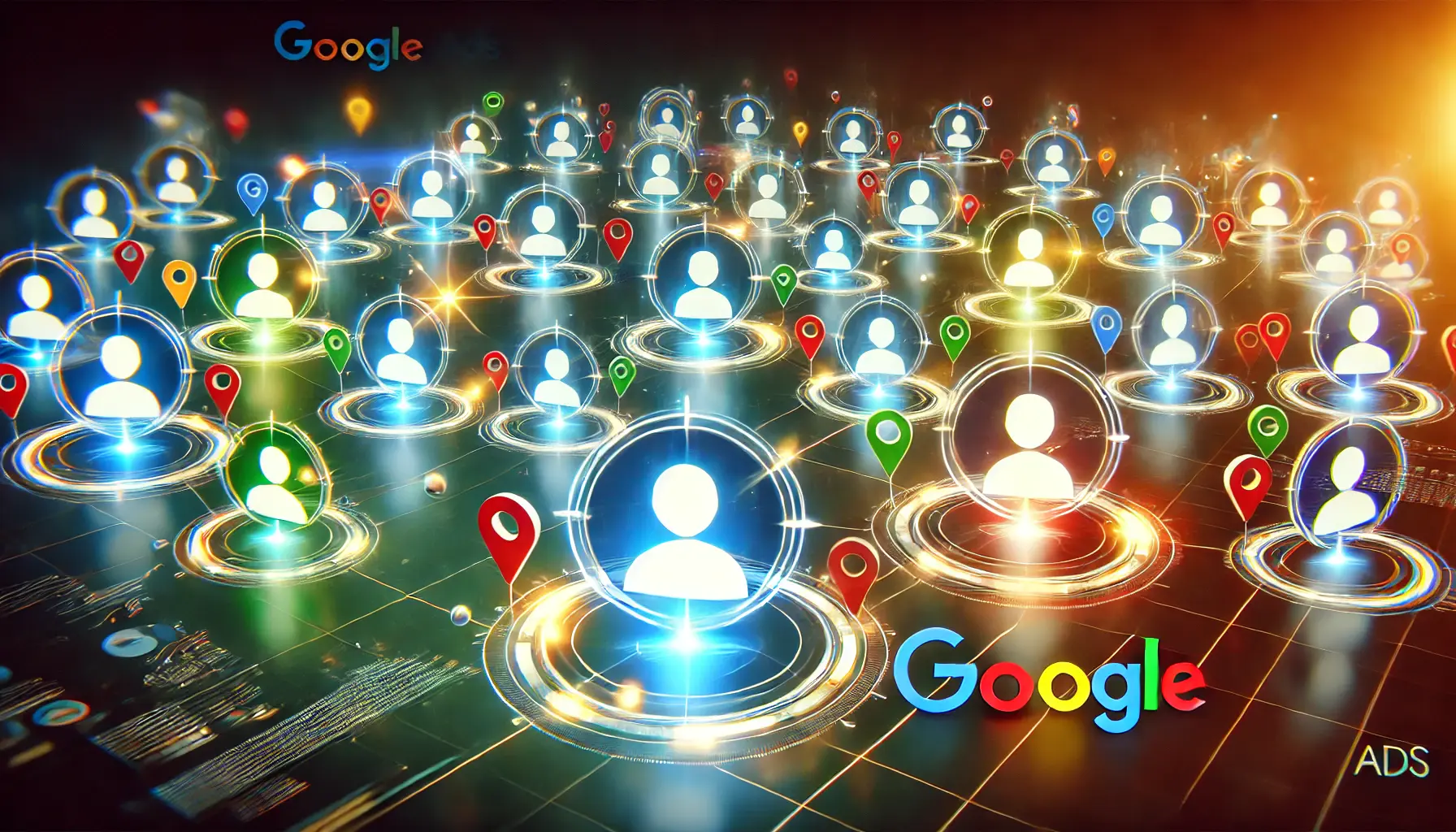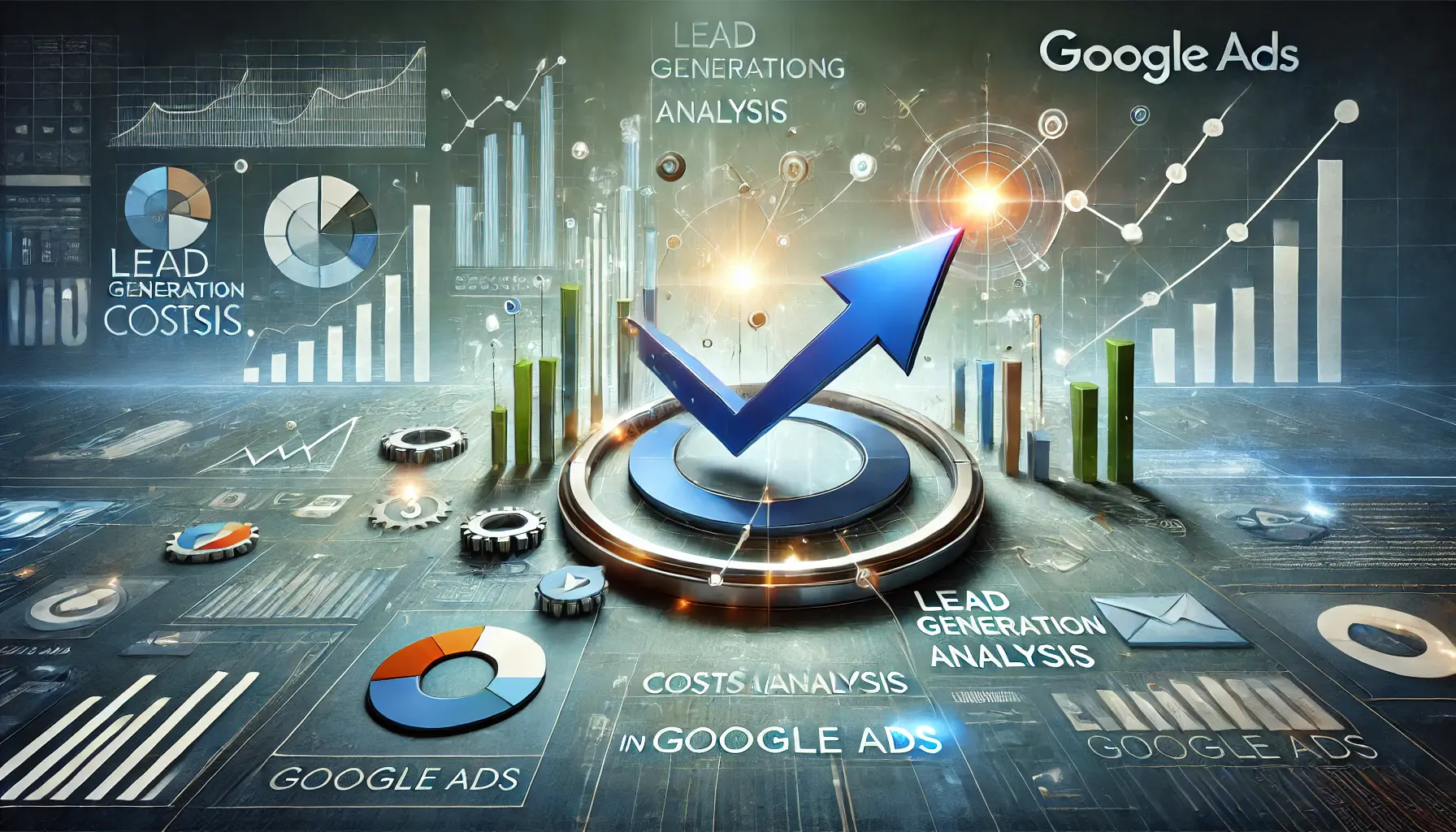In today’s digital landscape, mastering lead generation through app advertisements is crucial for business growth.
By effectively leveraging app ads, you can attract and convert potential customers, driving your business forward.
Let’s explore the fundamentals of lead generation in app advertising and how it can benefit your marketing strategy.
- Understanding the Basics of Lead Generation in App Ads
- Creating High-Impact App Ads for Lead Generation
- Optimizing Lead Generation with Google Ads Tools
- Leveraging AI and Machine Learning in App Advertising for Lead Generation
- Building Scalable Lead Generation Models in App Advertising
- Summarizing the Path to Effective Lead Generation in App Advertising
- Frequently Asked Questions About Lead Generation in App Advertising
Understanding the Basics of Lead Generation in App Ads
Lead generation involves attracting and converting prospects interested in your product or service.
In the context of app ads, it means using ads within mobile applications to grab user interest and collect their contact information for future engagement.
The advertising of apps contributes to a wider reach of users, allowing businesses to generate leads as users spend significant time on their mobile devices.
By strategically placing ads inside applications, you can tap into a vast audience and encourage them to take action, such as signing up for a newsletter or requesting more information.

Illustration of metrics and analytics essential for successful lead generation.
Key Metrics to Track for Successful Lead Generation
- Conversion rates: The percentage of users who take the desired action after viewing your ad.
- Cost per lead (CPL): The amount spent to acquire each lead.
- Click-through rates (CTR): The ratio of users who click on your ad to those who view it.
These metrics provide valuable insights into the effectiveness of your campaigns and help identify areas for improvement.
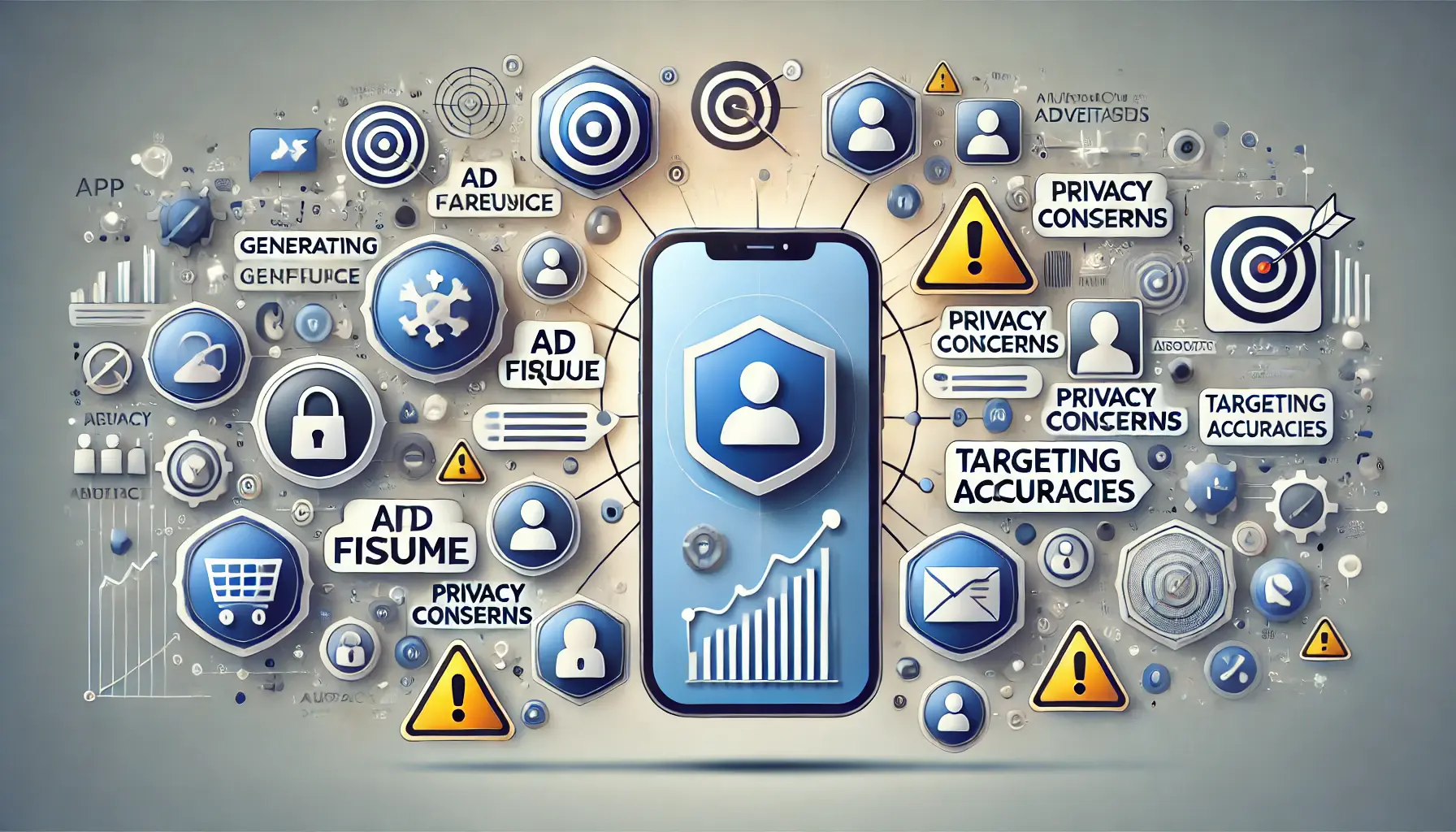
Visual depiction of the obstacles faced in generating leads through app advertisements.
Challenges in Generating Leads Through App Ads
- Ad fatigue: Users may become desensitized to ads if exposed too frequently.
- Privacy concerns: Navigating data privacy regulations while collecting user information.
- Targeting accuracy: Ensuring ads reach the most relevant audience to maximize conversions.
By understanding these challenges and implementing strategies to address them, you can significantly enhance your lead generation efforts through app advertisements.
Lead generation in app ads is a powerful strategy for converting mobile users into actionable prospects. By targeting the right audience and optimizing ads for engagement, businesses can achieve substantial results.
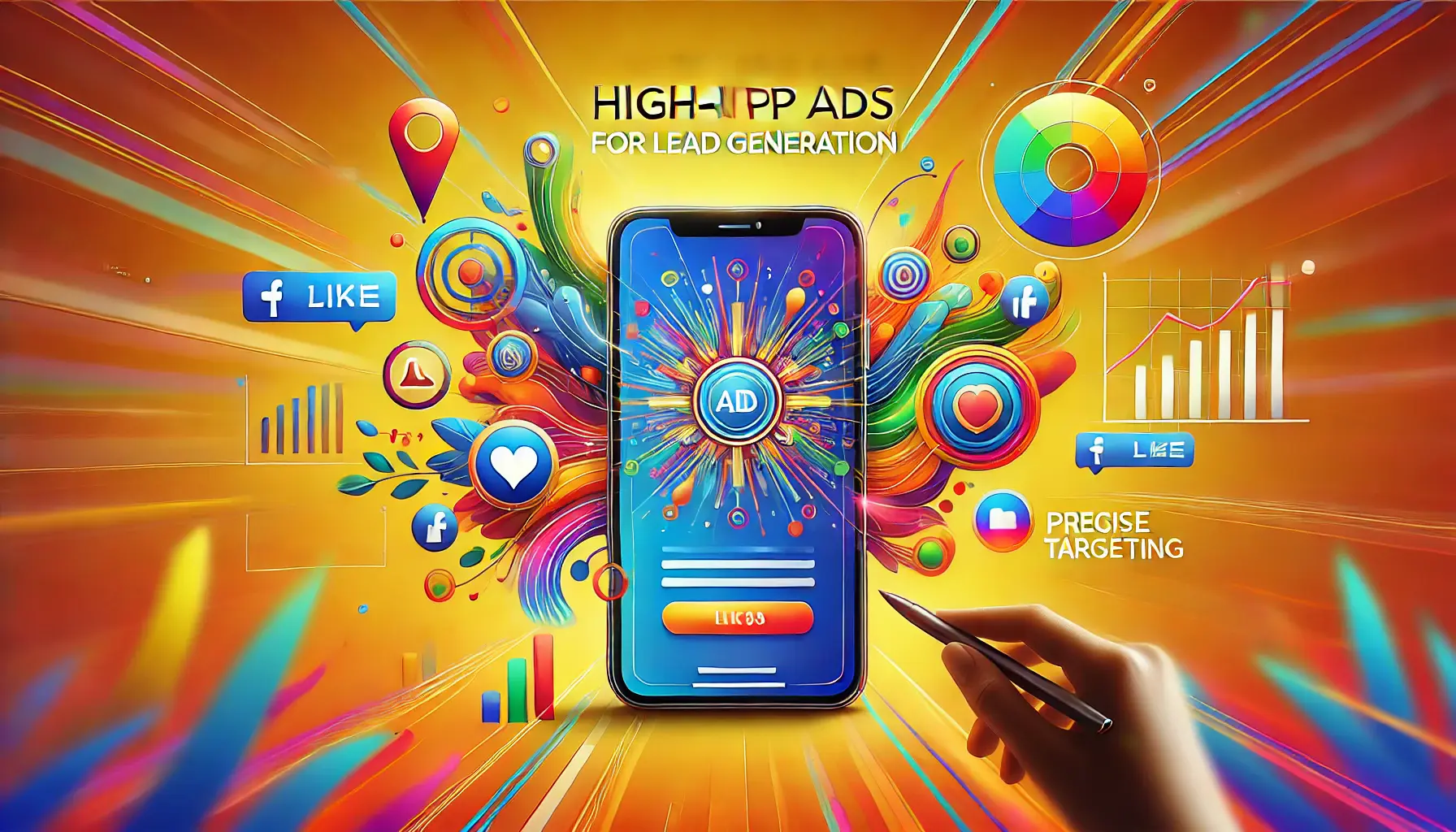
Illustration of strategies for crafting high-impact app advertisements for lead generation.
Creating High-Impact App Ads for Lead Generation
Designing app advertisements that effectively generate leads requires a strategic approach, focusing on visual appeal, compelling copy, precise audience targeting, and continuous optimization.
Let’s delve into the key components that contribute to high-impact app ads.
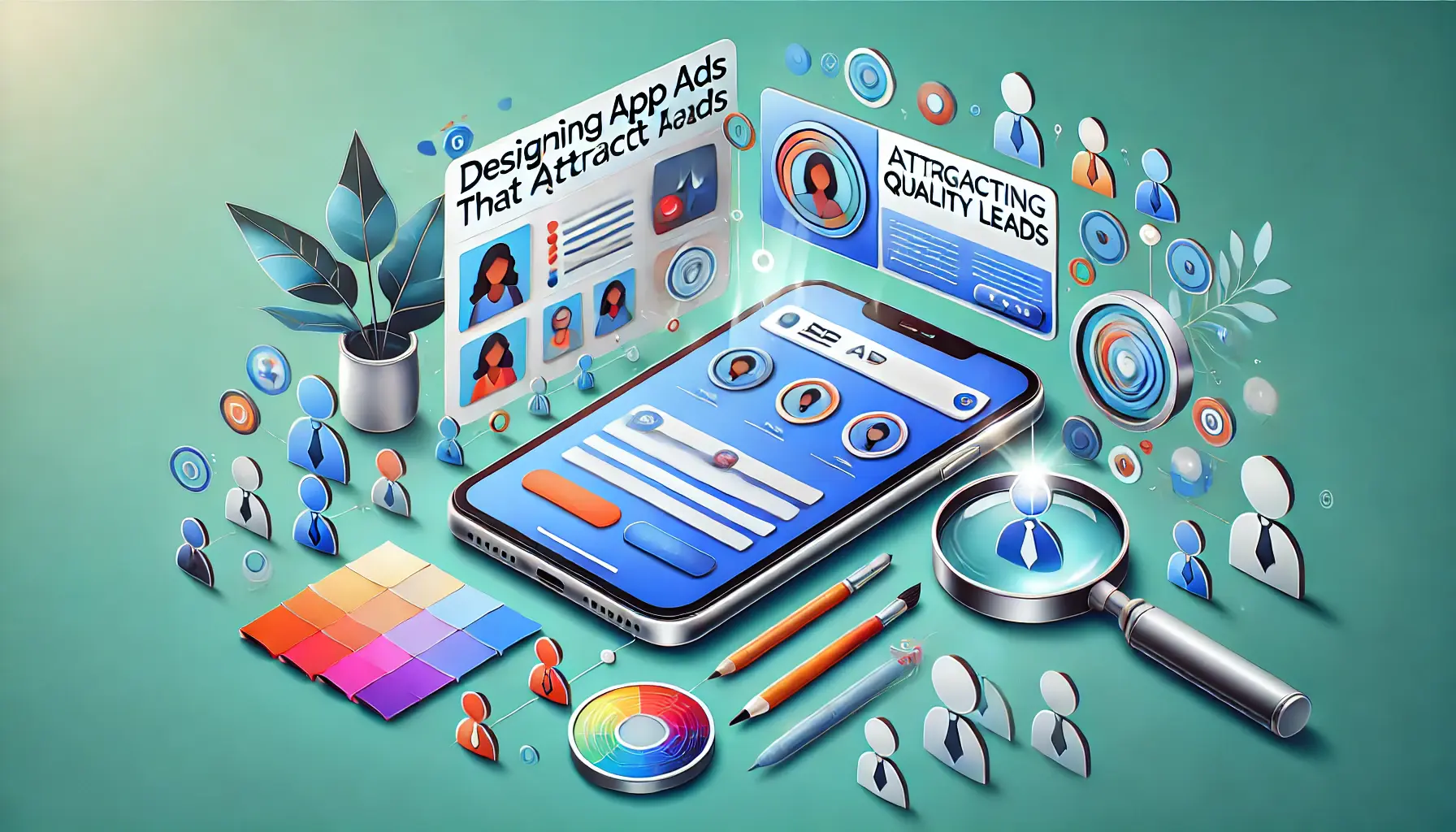
Visual representation of strategies for designing app ads to attract quality leads.
Designing App Ads That Attract Quality Leads
The visual design of your app ad plays a crucial role in capturing attention and attracting quality leads.
To enhance your ad’s effectiveness:
- Use high-quality images or videos that resonate with your target audience and reflect your brand’s identity.
- Ensure a clean and uncluttered layout to facilitate easy comprehension and engagement.
- Incorporate your brand’s colors and logo to reinforce brand recognition and trust.
By focusing on these design elements, your app ads can stand out and appeal to potential leads.

Illustration of strategies for writing persuasive ad copy to boost conversions.
Crafting Persuasive Ad Copy for Better Conversions
Compelling ad copy is essential to drive conversions.
To create persuasive messages:
- Highlight the unique value proposition of your app by clearly stating the benefits users will derive.
- Use action-oriented language to encourage immediate responses, such as “Download now” or “Get started today.”
- Keep your message clear and concise so it is easily conveyed and impactful.
Effective ad copy communicates the advantages of your app and motivates users to take action.
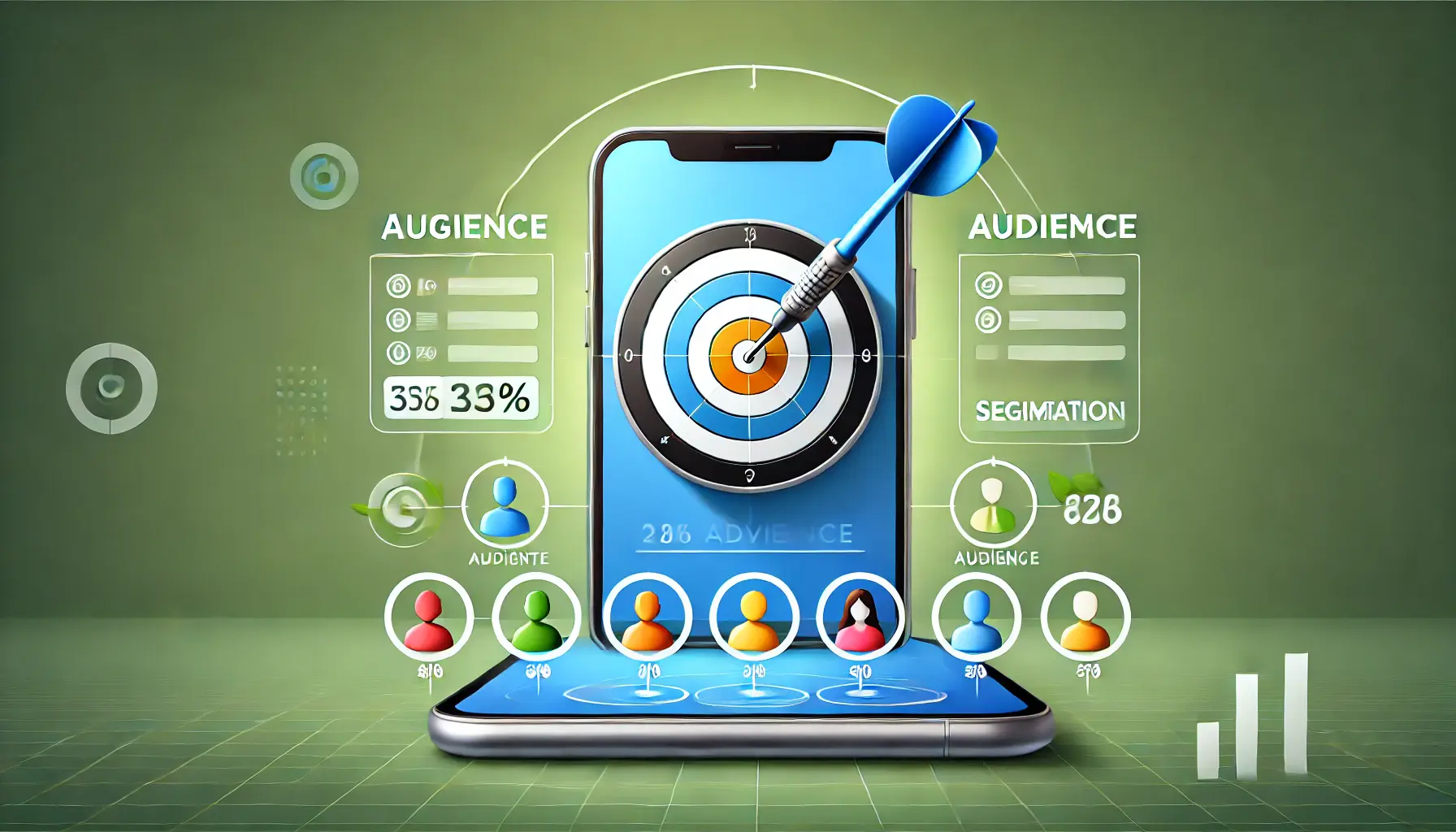
Visual representation of the significance of targeting the right audience in app advertising.
The Importance of Targeting the Right Audience
Reaching the appropriate audience is vital for lead generation success.
To achieve precise targeting:
- Utilize demographic data to define your audience based on age, gender, location, and interests.
- Leverage behavioral insights to target users who have shown interest in similar apps or services.
- Employ platform-specific targeting tools to refine your audience selection and improve ad relevance.
Accurate audience targeting ensures your ads are seen by individuals most likely to convert into leads.
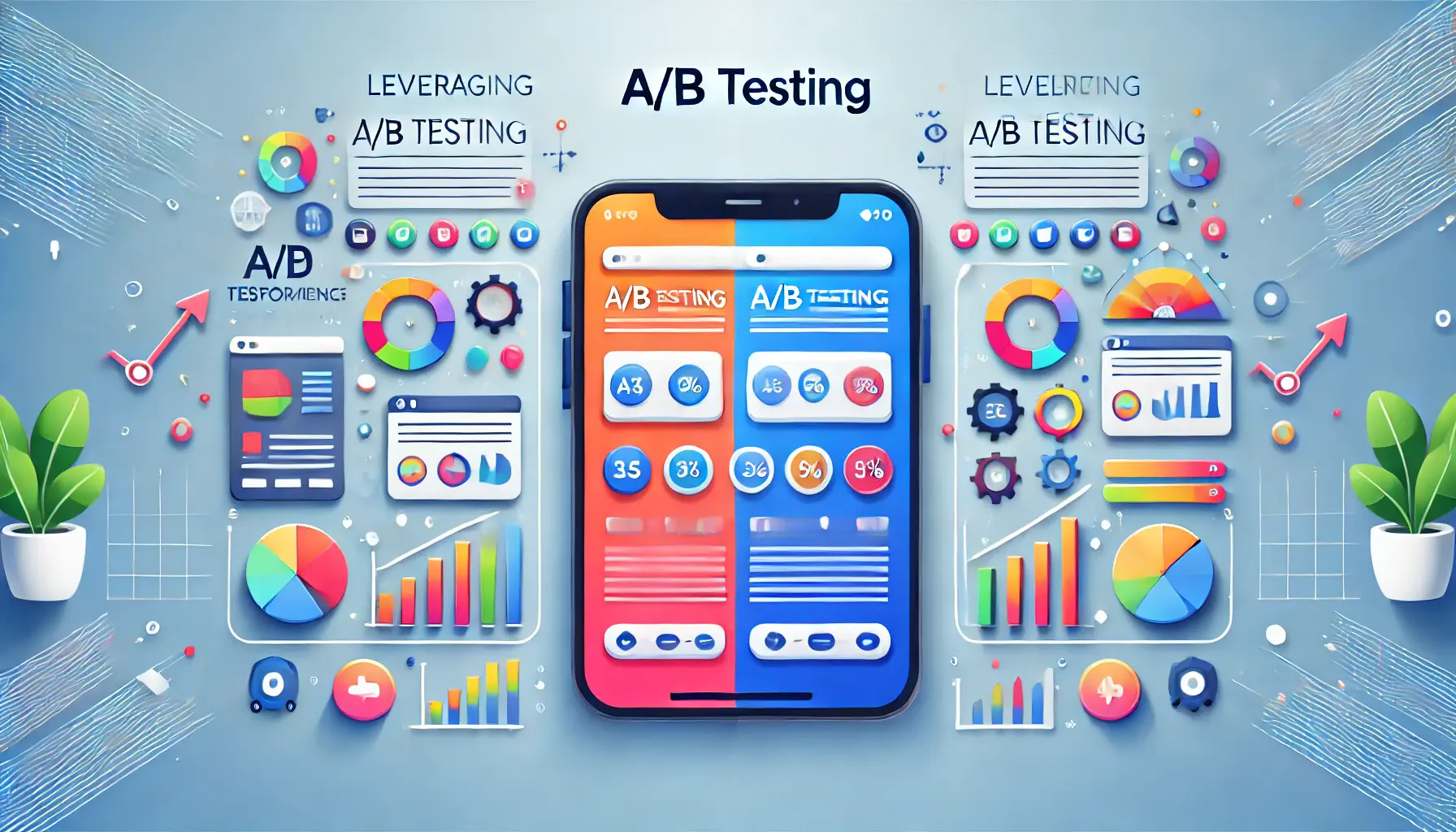
Visual representation of A/B testing strategies for enhancing ad performance.
Leveraging A/B Testing to Improve Ad Performance
Continuous optimization through A/B testingA method of comparing two versions of an ad or webpage to determine which performs better. enhances ad effectiveness.
To implement A/B testing:
- Create multiple ad variations with different images, headlines, or calls-to-action.
- Run each variant with a portion of your target audience to observe performance metrics.
- Analyze the results to identify which elements work best for your audience.
By systematically testing and refining your ads, you can optimize for higher engagement and lead generation.
Integrating these tips into your app advertising will greatly boost your capability to generate quality leads and meet your marketing goals.
High-impact app ads are achieved by combining visual appeal, compelling ad copy, and precise audience targeting. Focus on continuous optimization to maintain effectiveness.
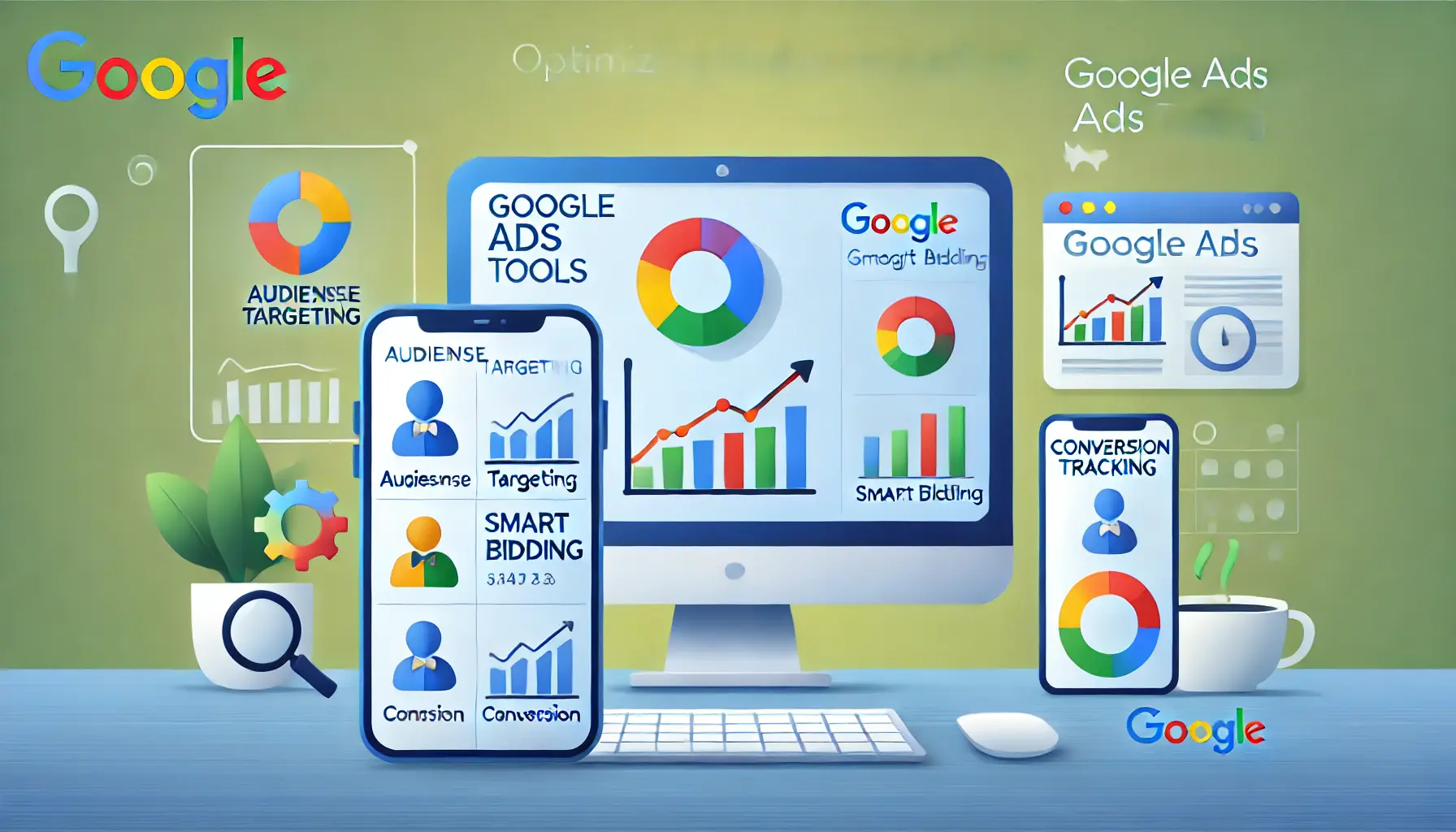
Illustration of lead generation optimization with Google Ads tools and analytics.
Optimizing Lead Generation with Google Ads Tools
Enhancing lead generation through app advertisements requires leveraging the robust tools offered by Google Ads.
By effectively utilizing audience targeting, conversion tracking, and smart bidding strategies, you can significantly improve your campaign’s performance and attract high-quality leads.
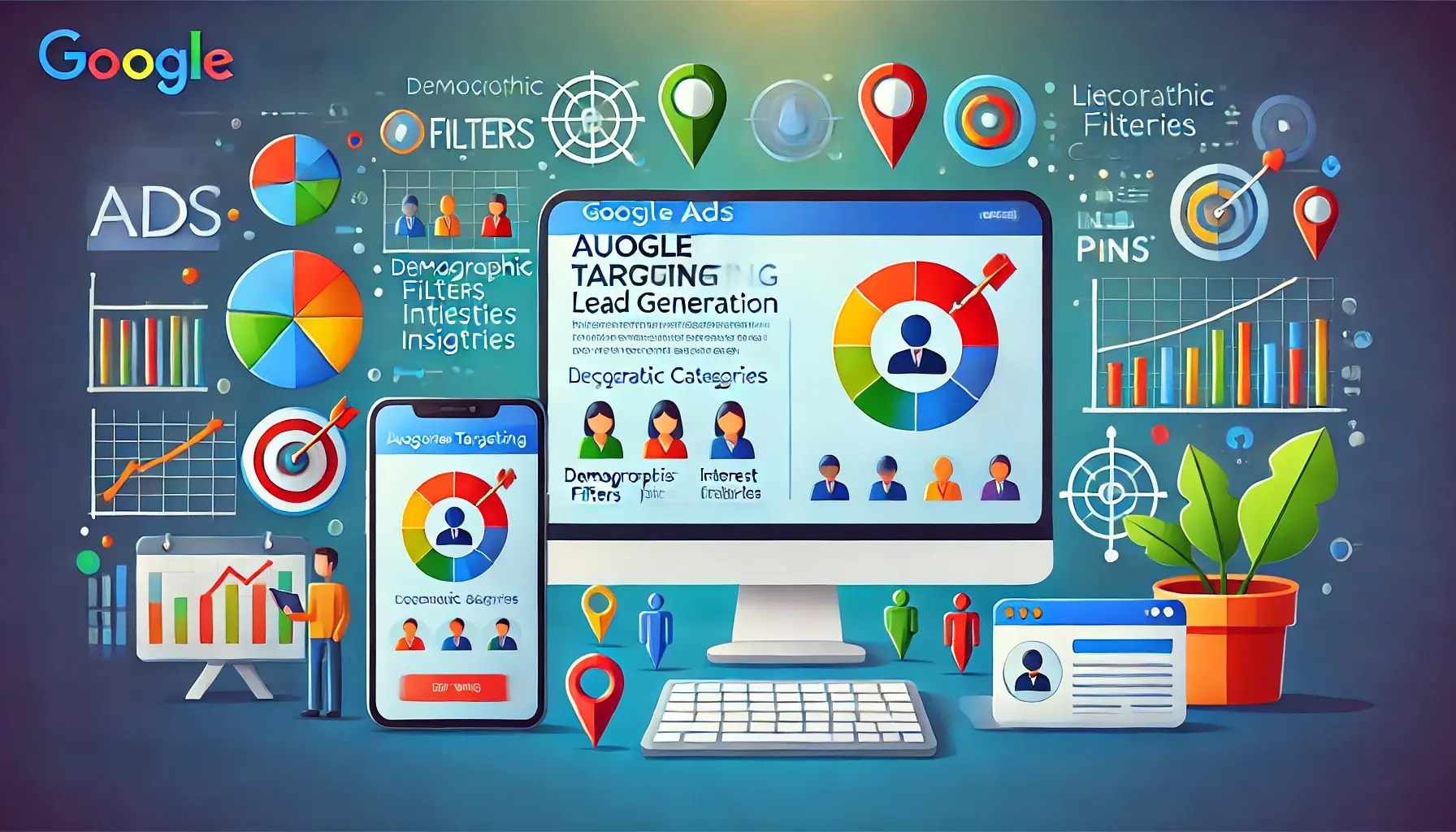
undefined
Using Google Ads Audience Targeting for Lead Generation
Precise audience targeting is essential to reach potential leads.
Google Ads offers various options to connect with the right users, including:
- Demographic Targeting: Define your audience by choosing age, gender, parental status, or household income to ensure your ads are shown to users who are most likely to be interested in your app.
- Affinity Audiences: Reach users based on their interests and habits. Such audiences align your ad serving with individuals who have shown a keen interest in topics related to your app.
- In-Market Audiences: Target users actively researching or comparing products or services similar to yours, capturing leads with a ready intent to make a purchase.
- Custom Audiences: Create tailored audience segments by combining relevant keywords, URLs, and apps to reach users with specific interests related to your app.
By implementing these audience targeting strategies, you can ensure your app ads are displayed to users most likely to convert into valuable leads.
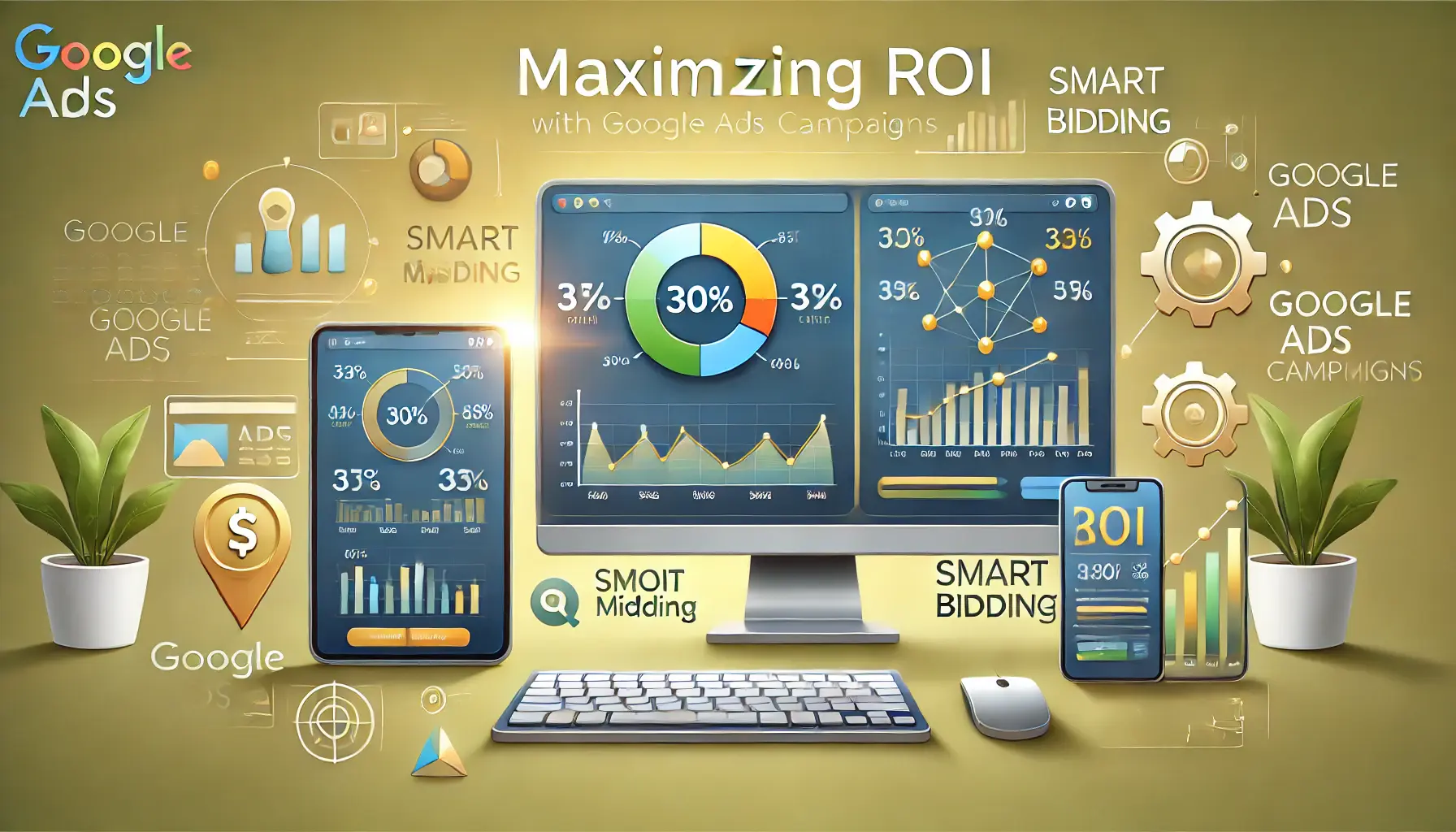
undefined
Maximizing ROI with Google Ads Campaigns
To achieve a higher return on investment (ROI) from your Google Ads campaigns, consider the following approaches:
- Performance Max Campaigns: Utilize Google’s Performance Max campaigns to access all Google channels—Search, Display, YouTube, Discover, Gmail, and Maps—through a single campaign, maximizing your reach and lead generation potential.
- Value-Based Bidding: Implement value-based bidding strategies like Maximize Conversion Value or Target ROAS to prioritize your budget towards acquiring the most valuable leads for your business.
- Data-Driven Attribution: Apply data-driven attribution models to understand the customer journey better and allocate your budget effectively across various touchpoints.
These strategies allow you to optimize your campaigns for better performance and a higher ROI.
Illustration of the process of setting up conversion tracking for lead metrics in digital marketing.
Setting Up Conversion Tracking for Lead Metrics
Accurate conversion tracking is critical for measuring the success of your lead generation efforts.
To set up conversion tracking in Google Ads:
- Implement Conversion Tags: Add the Google Ads conversion tracking tag to your app or website to track conversions—user actions that are considered a conversion, such as form submissions or app installs.
- Define Conversion Actions: Clearly define the actions that have value for your business, ensuring each conversion aligns with your lead generation objectives.
- Use Enhanced Conversions: Leverage enhanced conversions to achieve more accurate data by using first-party information in a privacy-safe way.
By setting up comprehensive conversion tracking, you gain insights into the effectiveness of your campaign and can make data-driven decisions to enhance lead generation.
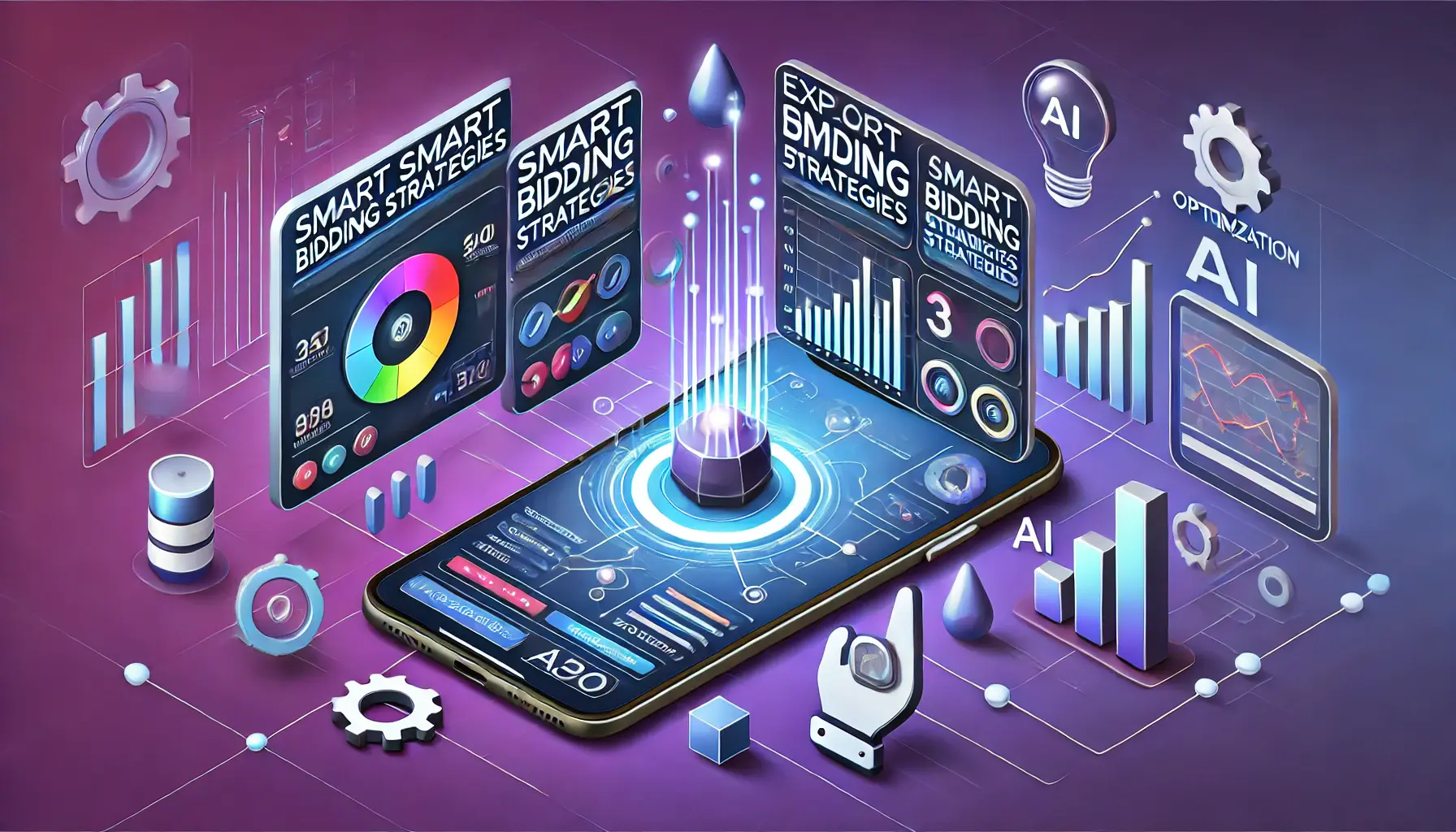
Illustration of smart bidding strategies for better results in digital marketing.
Exploring Smart Bidding Strategies for Better Results
Smart Bidding uses Google’s AI to optimize bids for each auction, helping you maximize your lead generation efforts.
Key Smart Bidding strategies include:
- Target CPA (Cost Per Acquisition): Automatically sets bids to help you get as many conversions as possible at your target cost per acquisition.
- Target ROAS (Return on Ad Spend): Sets bids to maximize conversion value while achieving your target return on ad spend.
- Maximize Conversions: Adjusts bids to help you get the most conversions within your budget.
- Maximize Conversion Value: Optimizes bids to achieve the highest total conversion value within your budget.
These Smart Bidding strategies enable you to automate and fine-tune your bidding process for better lead generation outcomes.
Integrating these Google Ads tools and strategies into your app advertising campaigns will enhance lead generation by ensuring that the right audience is targeted and valuable conversions are created.
- Audience targeting ensures ads reach the right users.
- Smart Bidding strategies help maximize campaign ROI.
- Conversion tracking offers accurate insights into lead generation success.

undefined
Leveraging AI and Machine Learning in App Advertising for Lead Generation
Incorporating Artificial Intelligence (AI) and Machine Learning (ML) into app advertising has revolutionized lead generation strategies.
These technologies enable businesses to identify, engage, and convert potential customers more efficiently, enhancing the overall effectiveness of marketing campaigns.

undefined
Predictive Analytics for Identifying High-Quality Leads
AI-driven predictive analyticsThe use of data, statistical algorithms, and machine learning to identify future outcomes based on historical data. analyze vast datasets to forecast which users are most likely to convert into leads.
By examining user behavior, demographics, and interaction patterns, businesses can:
- Prioritize High-Potential Leads: Focus resources on users with a higher likelihood of conversion, optimizing marketing efforts.
- Personalize Marketing Strategies: Tailor content and outreach methods to align with the preferences and behaviors of targeted users.
This targeted approach increases the efficiency of lead generation campaigns, resulting in higher conversion rates.
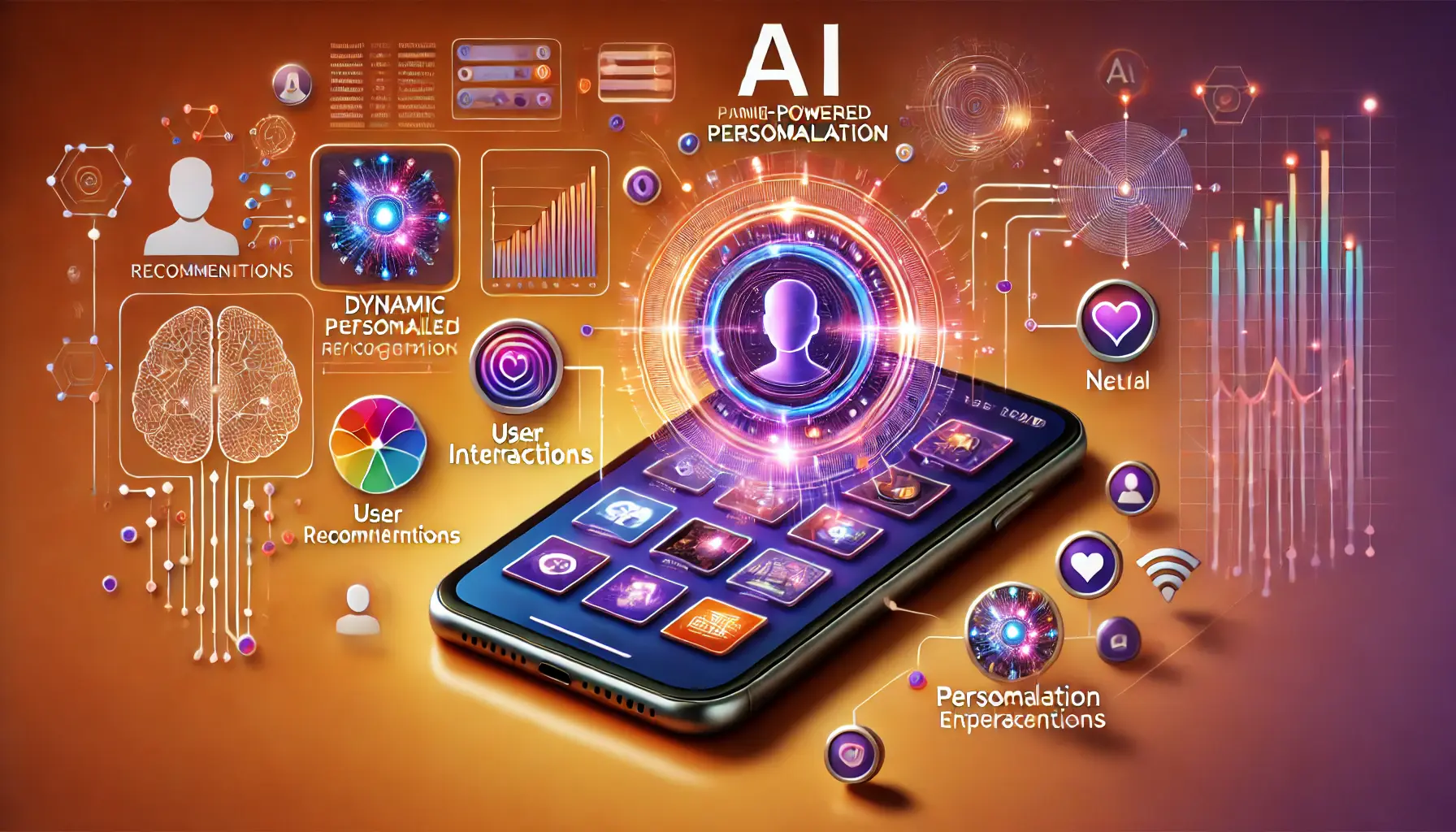
Illustration of AI-powered personalization to enhance user engagement.
Enhancing User Engagement with AI-Powered Personalization
AI enables the creation of personalized user experiences by analyzing individual user data.
Implementing AI-powered personalization allows for:
- Customized Content Delivery: Presenting users with content that matches their interests and behaviors, increasing engagement.
- Dynamic Ad Adjustments: Modifying advertisements in real-time based on user interactions to maintain relevance and interest.
Personalization fosters a deeper connection with users, encouraging them to engage more actively with the app and progress through the lead funnel.

Illustration of automating lead nurturing processes with workflow and automation tools.
Automating Lead Nurturing Processes
Machine Learning algorithms facilitate the automation of lead nurturingThe process of developing relationships with potential customers at every stage of the sales funnel. by:
- Segmenting Leads: Categorizing leads based on behavior, engagement level, and readiness to convert.
- Triggering Targeted Communications: Sending personalized messages or offers at optimal times to guide leads through the conversion process.
This automation ensures consistent and timely engagement with potential customers, enhancing the likelihood of conversion.
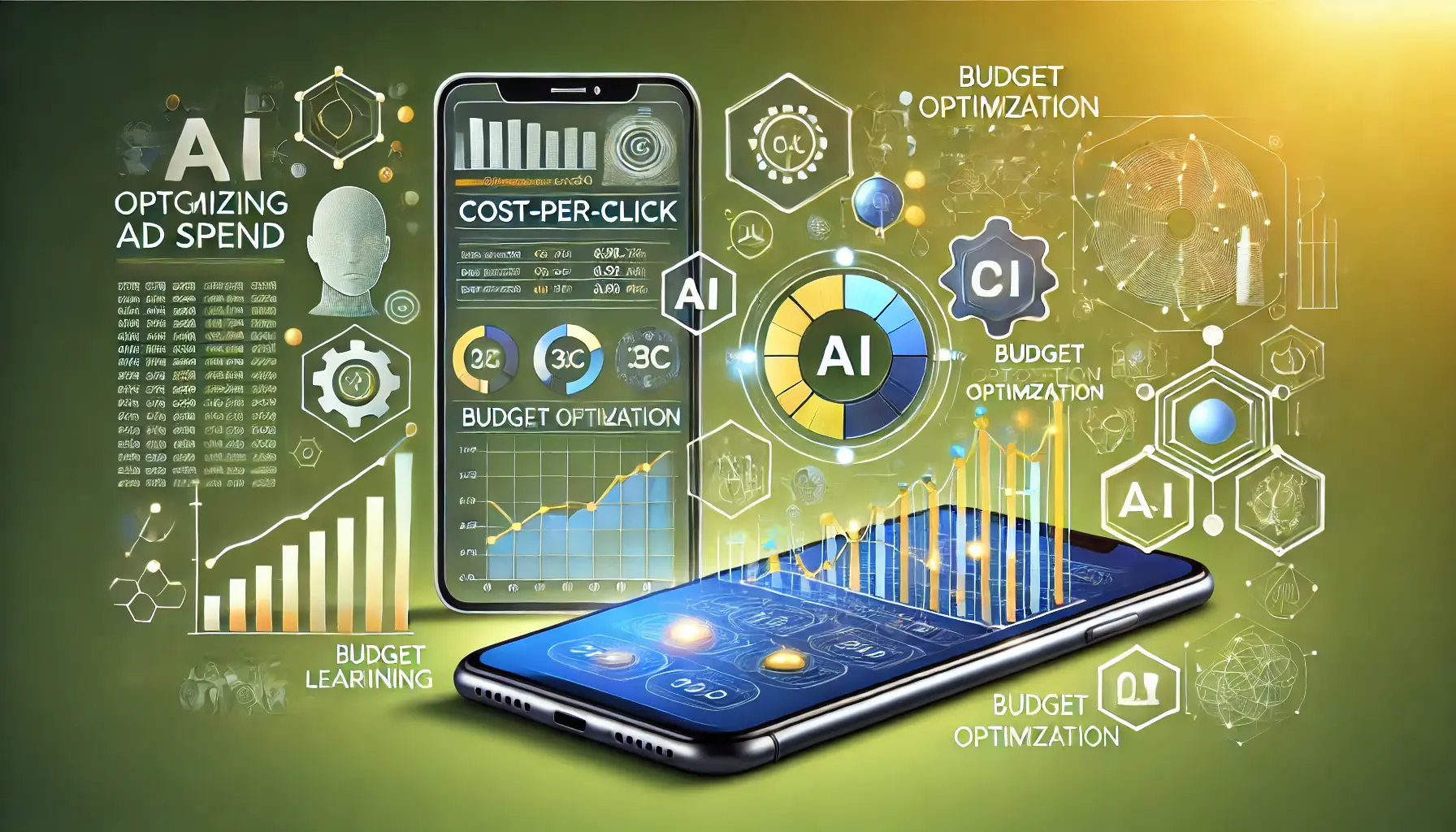
Illustration of optimizing ad spend with AI-driven insights and performance analytics.
Optimizing Ad Spend with AI-Driven Insights
AI provides valuable insights into ad performance, enabling businesses to:
- Allocate Budget Effectively: Identify high-performing ads and channels to focus investment where it yields the best returns.
- Reduce Cost Per Acquisition (CPA): Streamline campaigns to lower the expenses associated with acquiring each lead.
By optimizing ad spend, companies can achieve a higher return on investment (ROI) for their lead generation efforts.
Integrating AI and Machine Learning into app advertising strategies empowers businesses to enhance lead generation by making data-driven decisions, personalizing user experiences, and automating processes.
Staying abreast of technological advancements is crucial for maintaining a competitive edge in the dynamic landscape of digital marketing.
AI and machine learning enable businesses to personalize ads and predict user behavior. Leverage these technologies for efficient lead generation and better ROI.
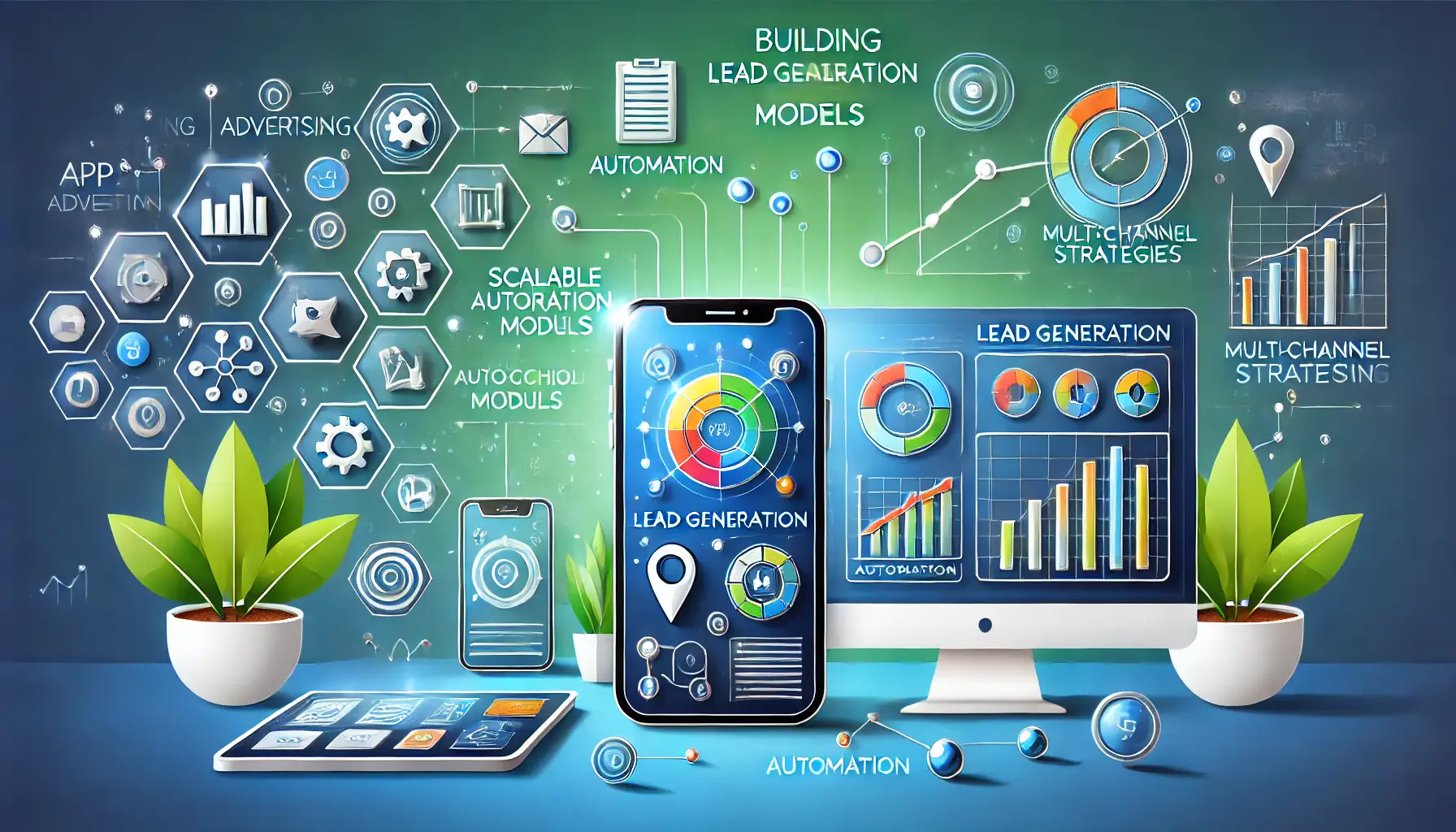
undefined
Building Scalable Lead Generation Models in App Advertising
Developing scalable lead generation models is essential for sustaining growth in app advertising.
By implementing robust strategies and leveraging emerging trends, businesses can efficiently attract and convert potential customers.

Illustration of implementing multi-channel lead generation strategies in digital marketing.
Implementing Multi-Channel Lead Generation Strategies
Utilizing multiple channels enhances reach and diversifies lead sources.
Effective approaches include:
- Social Media Advertising: Platforms like Facebook, Instagram, and TikTok offer targeted advertising opportunities to engage specific demographics.
- Content Marketing: Creating valuable content such as blogs, videos, and infographics to attract and nurture leads.
- Email Marketing: Sending personalized messages to prospects to build relationships and encourage conversions.
Integrating these channels ensures a comprehensive approach to lead generation, increasing the likelihood of reaching potential customers.

Illustration of utilizing automation tools for efficient lead management.
Utilizing Automation Tools for Lead Management
Automation streamlines lead management processes, allowing for efficient handling of large volumes of leads.
Key tools include:
- Customer Relationship Management (CRM) Systems: Manage relationships by centralizing lead information and tracking interactions.
- Marketing Automation Platforms: Automate tasks such as email campaigns and social media posting to maintain continuous engagement.
- Lead Scoring Mechanisms: Assign values to leads based on behavior and engagement to prioritize follow-up efforts.
Implementing these tools enhances efficiency and ensures that leads are moved appropriately through the sales funnel.

Illustration of analyzing data to optimize lead generation efforts.
Analyzing Data to Optimize Lead Generation Efforts
Data analysis provides insights into the effectiveness of lead generation strategies.
Important metrics to monitor include:
- Conversion Rates: Measure the percentage of leads that convert into customers to assess campaign success.
- Cost Per Lead (CPL): Calculate the expense incurred to acquire each lead, aiding in budget allocation.
- Return on Investment (ROI): Evaluate the profitability of lead generation activities to determine overall effectiveness.
Regular analysis of these metrics allows for data-driven decisions, optimizing lead generation strategies for better outcomes.
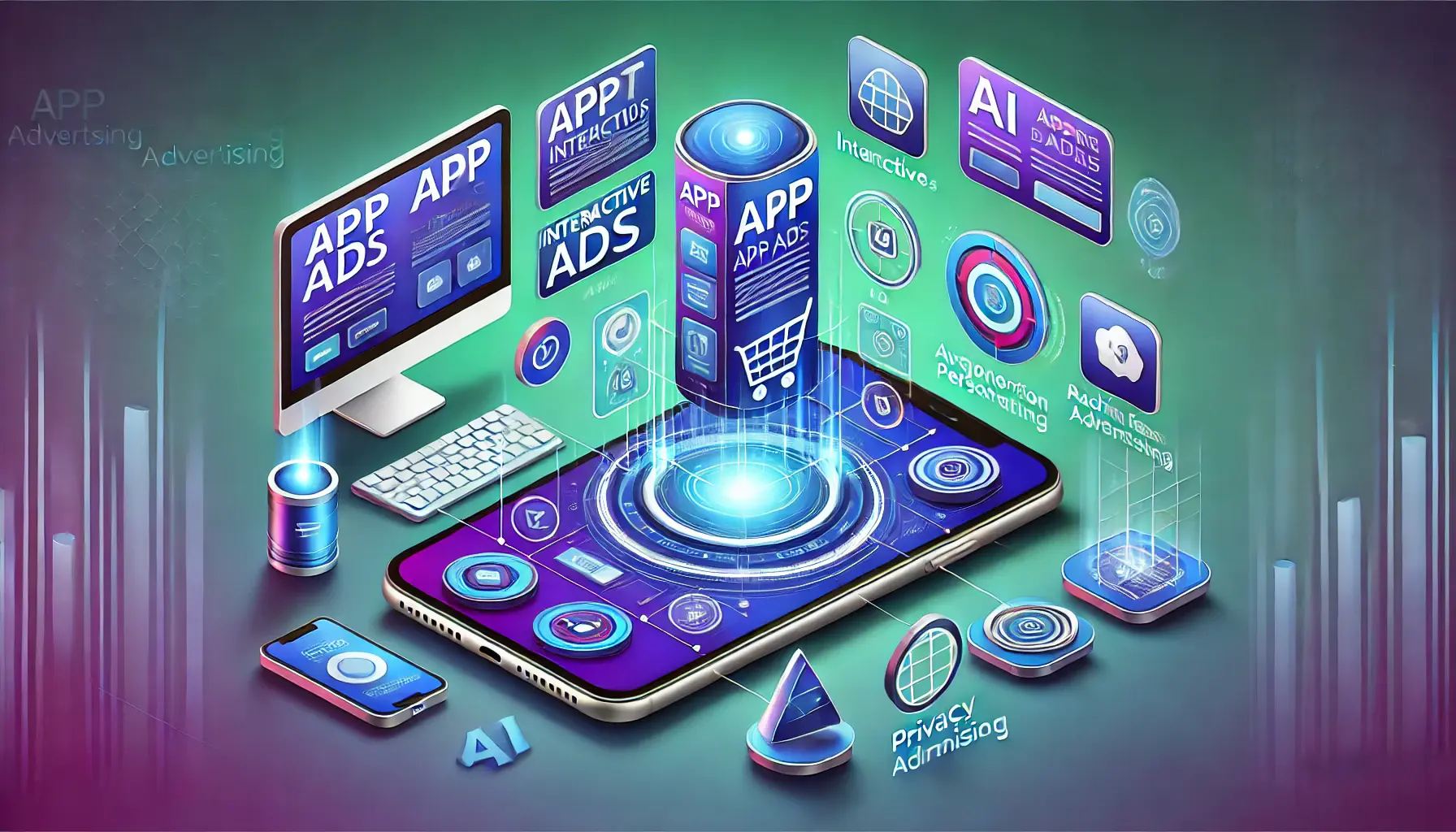
Illustration of adapting to emerging trends in app advertising.
Adapting to Emerging Trends in App Advertising
Staying informed about industry trends is crucial for maintaining a competitive edge.
Notable trends include:
- AI Integration: The use of AI in predictive analytics and the personalization of experiences increases lead generation efficiency.
- Privacy-Focused Advertising: The evolution of advertising in the data privacy environment involves transparency in data collection and usage to gain the trust of users.
- Interactive Ad Formats: Engaging ad formats, such as playable ads and AR experiences, raise user interaction and lead conversion rates.
Embracing these trends enables businesses to innovate and ensure their lead generation efforts remain effective in today’s dynamic advertising landscape.
By building scalable lead generation models that incorporate multi-channel strategies, automation tools, data analysis, and an eye on emerging trends, businesses can attract and convert leads, ultimately driving sustainable growth in app advertising.
Scalability in lead generation is achieved by using multi-channel strategies, automation tools, and data-driven decisions. Stay updated with emerging trends for continuous growth.
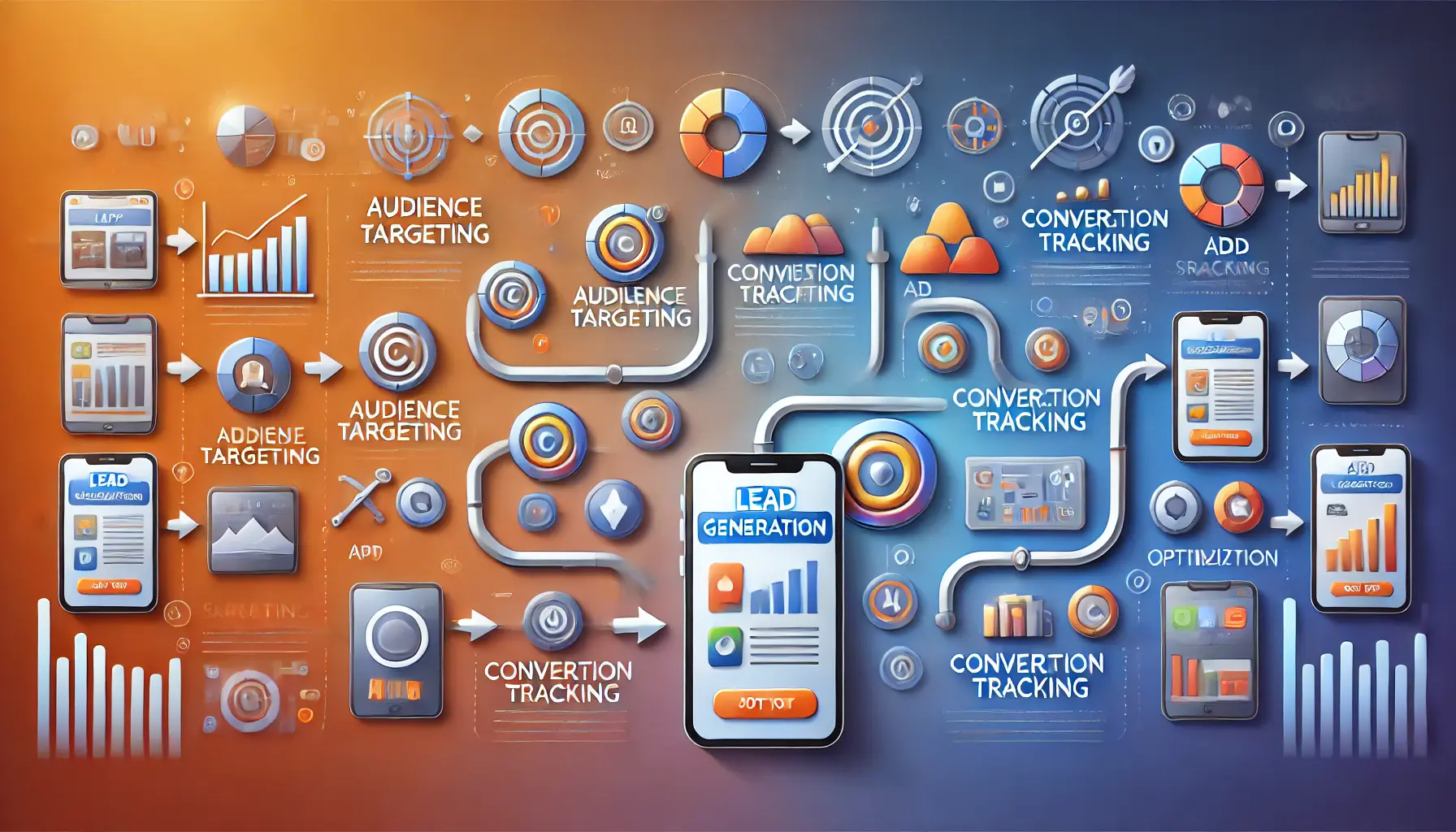
Illustration of the process of effective lead generation in app advertising.
Summarizing the Path to Effective Lead Generation in App Advertising
Mastering lead generation in app advertising is a multi-faceted process that demands strategy, innovation, and continuous improvement.
By implementing the insights and strategies discussed, businesses can effectively capture and convert leads, fostering sustained growth.
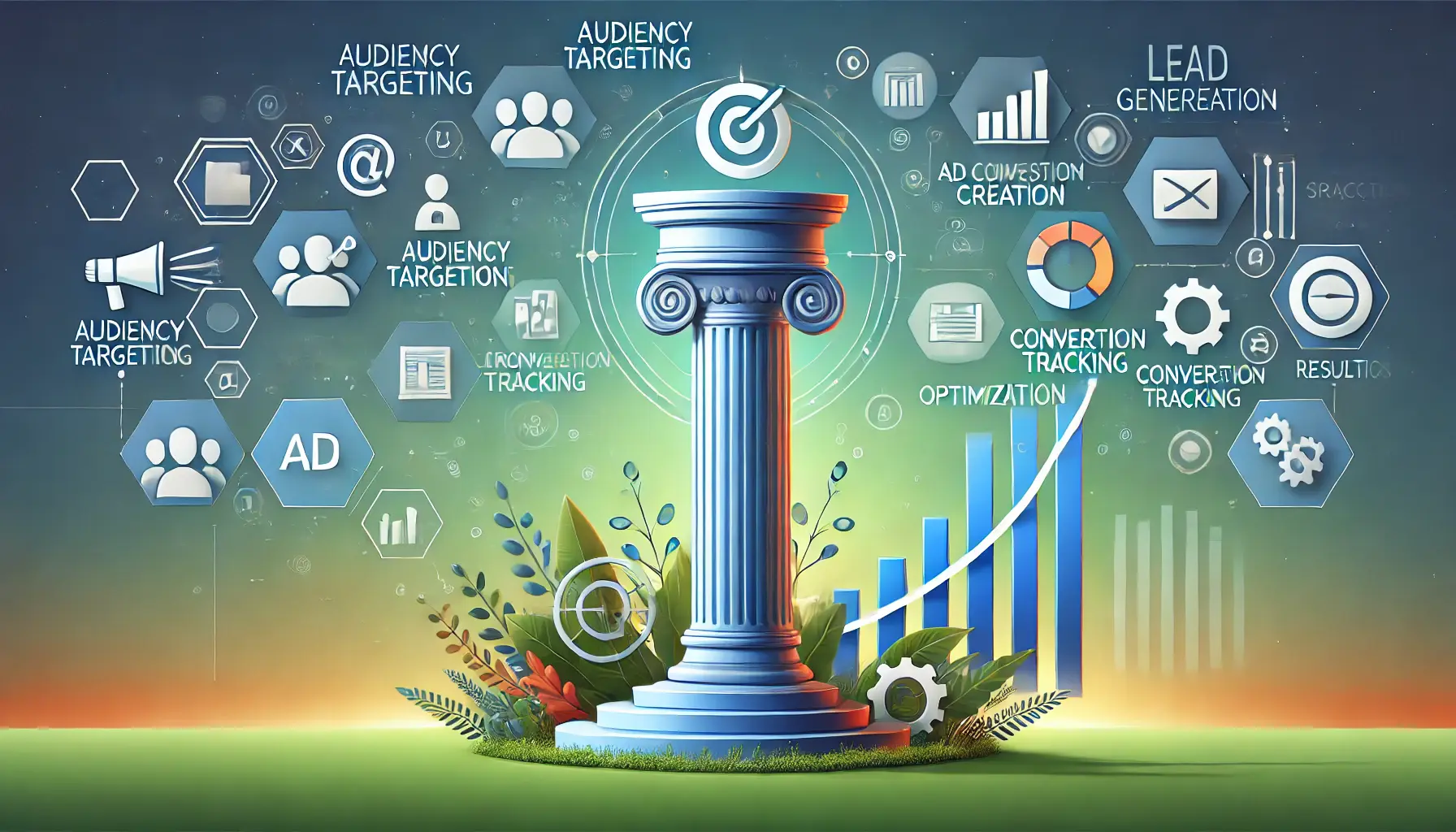
Illustration of the key pillars that lead to lead generation success.
The Core Pillars of Lead Generation Success
Throughout this article, we explored various components critical to building a successful lead generation framework:
- Basic Understanding of Lead Generation: Understanding how app ads attract and convert prospects forms the foundation for effective campaigns.
- Designing Impactful App Ads: A combination of visually appealing designs and compelling copy ensures maximum user engagement.
- Leveraging Google Ads Tools: Advanced features such as audience targeting, conversion tracking, and Smart Bidding optimize campaigns for better performance.
- Enhancing User Engagement: Strategies like gamification, personalization, and effective onboarding foster sustainable lead growth.
- Incorporating AI and Automation: Employing AI-driven tools and predictive analytics ensures precise targeting and scalable lead management.

Illustration of the key takeaways for achieving scalable and sustainable growth.
Key Takeaways for Scalable and Sustainable Growth
To achieve scalable and sustainable growth in app advertising, businesses should focus on:
- Implementing multi-channel strategies to diversify lead sources and enhance reach.
- Utilizing automation tools to streamline lead management and nurture efforts.
- Regularly analyzing campaign performance to make data-driven decisions.
- Adapting to emerging trends such as AI integration, privacy-focused advertising, and interactive ad formats.
By focusing on these areas, businesses can remain competitive in the dynamic world of app advertising while maximizing their lead generation potential.

Illustration of moving forward with confidence towards future success.
Moving Forward with Confidence
Lead generation in app advertising is not a one-time effort but an ongoing journey of refinement and adaptation.
As technology continues to evolve and consumer behaviors change, staying informed and proactive is essential for long-term success.
By applying the strategies and tools explored in this article, businesses can confidently navigate the complexities of app advertising, effectively attract quality leads, and achieve their marketing objectives.
Combining creativity with data-driven strategies ensures sustainable growth in lead generation. Constantly refine your methods to stay ahead in the competitive app advertising space.

Illustration of frequently asked questions related to lead generation in app advertising.
Your campaigns can be managed by an agency specialized in Google Ads, check out our service page.
Frequently Asked Questions About Lead Generation in App Advertising
Understanding lead generation in app advertising can be complex.
Here are some common questions to help clarify key concepts and strategies.
Lead generation in app advertising involves attracting and capturing potential customers’ interest through ads within mobile applications, aiming to convert them into paying clients.
Lead generation focuses on converting interested individuals into leads, while demand generation aims to build awareness and interest in a product or service.
Effective strategies include using compelling visuals, clear calls-to-action, precise audience targeting, and offering valuable incentives to encourage user engagement.
Key metrics to monitor include conversion rates, cost per lead (CPL), click-through rates (CTR), and the quality of leads generated.
Personalized content addresses unique user needs, enhancing engagement and increasing the likelihood of conversion by delivering relevant messages.
AI can analyze user behavior, automate processes, and deliver personalized experiences, improving targeting accuracy and lead management efficiency.
